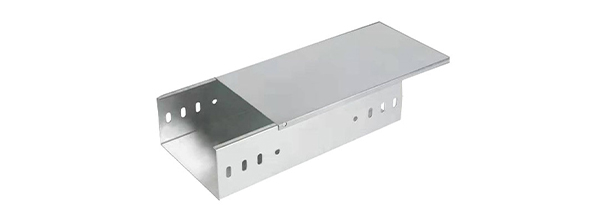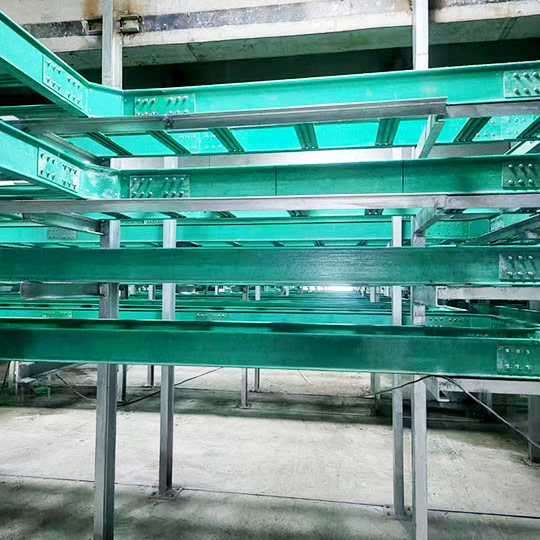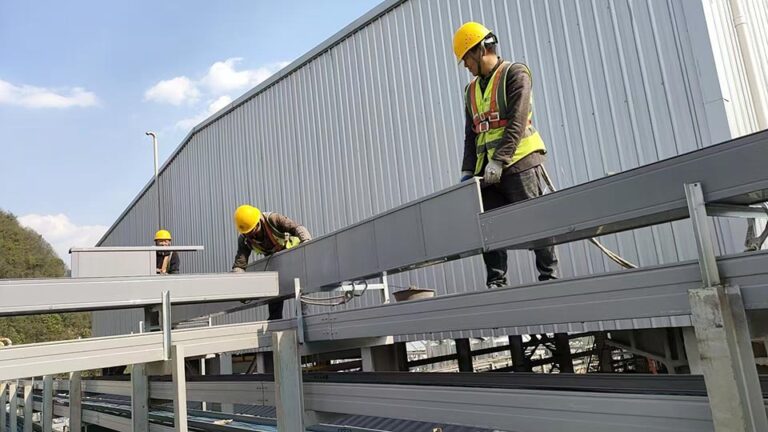When planning electrical systems, one of the most crucial decisions you’ll face is choosing the correct cable tray dimensions. Whether you’re setting up a large-scale industrial facility or a commercial building, the size of your cable trays plays a significant role in both system performance and safety. In this blog post, we will dive into the factors that influence cable tray sizing, explore common dimensions, and offer insights on how to choose the right tray for your electrical project.
Welcome to My Blog!
Before we dive into the content, I’d love for you to join me on my social media platforms, where I share more insights, engage with the community, and post updates. Here’s how you can connect with me:
Facebook: https://www.facebook.com/profile.php?id=61576230391049
Now, let’s get started on our journey together. I hope you find the content here insightful, engaging, and valuable.

Table of Contents
Introduction
Cable trays are essential components of any electrical infrastructure, serving as safe, organized pathways for cables. However, many overlook the importance of selecting the correct cable tray dimensions when planning an electrical system. The wrong choice can result in inefficient cable management, overheating, and potential safety hazards.
The right cable tray size not only ensures that cables are securely supported but also provides sufficient air circulation space to minimize the risk of heat buildup. In this guide, we will explore how to calculate cable tray sizes based on various factors such as cable type, system load, and environmental conditions.
Factors Affecting Cable Tray Dimensions
Choosing the right cable tray dimensions is more than just picking the biggest available option. Several factors must be taken into account, including the type of cables, the load they will carry, and the environment in which they’ll be installed. Here are some critical factors that influence cable tray sizing:
- Cable Load and Weight
The total weight of the cables being installed plays a major role in determining the correct tray size. Heavier cables require stronger, wider trays to ensure they are adequately supported without causing sagging or overloading. - Cable Type
Different types of cables (power, data, control) require different amounts of space. For instance, power cables typically require more room than data cables. Cable trays should be sized to accommodate the type and number of cables being used in the system. - Ventilation and Cooling
Adequate airflow around the cables is critical for preventing overheating. This is particularly important in environments with high temperatures or where cables carry high electrical loads. The dimensions of your cable tray should allow for proper ventilation. - Expansion Considerations
It’s always wise to plan for future expansion. If you anticipate adding more cables in the future, selecting a larger tray than initially necessary can save time and cost down the line. - Environment and Location
The environment in which the cable trays are installed also influences their size. Harsh, corrosive environments may require specialized trays, such as galvanized steel or fiberglass, which may impact available dimensions and structural integrity.

Common Cable Tray Dimensions
Below is a general overview of standard cable tray sizes commonly used in various industries:
| Tray Type | Width Range | Height Range | Load Capacity | Application |
|---|---|---|---|---|
| Ladder Cable Tray | 100mm – 800mm | 5100mm – 200mm | Heavy-duty | Industrial, commercial, power systems |
| Perforated Cable Tray | 100mm – 800mm | 100mm – 200mm | Medium-duty | Data centers, communication cables |
| Solid Bottom Cable Tray | 100mm – 800mm | 100mm – 200mm | Heavy-duty | High voltage cables, industrial plants |
| Through Cable Tray | 100mm – 800mm | 100mm – 200mm | Medium to heavy | Control cables, low-voltage systems |
Note: The dimensions above are standard and can vary based on manufacturer specifications and environmental needs.
How to Calculate Cable Tray Size for Your Project
Selecting the proper cable tray dimensions requires a detailed calculation based on your system’s specific needs. Here’s a step-by-step guide on how to determine the correct tray size for your project:
- Determine the total number of cables that need to be installed.
- Calculate the diameter of each cable to determine how much space it will occupy within the tray.
- Add space for future expansion, ensuring that you have enough room to accommodate additional cables as your system grows.
- Consider the load capacity of the tray, ensuring that it can bear the combined weight of the cables.
- Account for air circulation and make sure the tray’s dimensions provide sufficient clearance for cooling.
How Cable Tray Dimensions Affect Safety and Performance
Improper cable tray dimensions can lead to safety hazards and system inefficiency. If a tray is too small, cables can become overcrowded, leading to overheating, which may cause cable degradation or even fires. On the other hand, excessively large trays may result in unnecessary material costs and increased installation time.
The key is to balance cable tray dimensions that allow enough space for cables to be securely supported while also ensuring proper airflow. Additionally, selecting the right tray material, such as galvanized steel or fiberglass, can enhance the durability and lifespan of your installation.

Conclusion
Choosing the right cable tray dimensions is crucial for ensuring that your electrical system operates efficiently and safely. By considering factors such as cable type, load capacity, future expansion, and ventilation requirements, you can select the optimal tray size that meets both your current and future needs.
When planning your next electrical installation, don’t overlook the importance of cable tray sizing. By selecting the right dimensions, you can avoid potential safety hazards, reduce costs, and ensure your cables are properly supported and protected.
FAQ
How do I know if I need a larger cable tray?
If your project is expected to grow or if you anticipate adding more cables in the future, it’s wise to opt for a slightly larger tray. Overcrowded trays can lead to overheating and damage to cables.
Can I use a standard-size cable tray for all types of cables?
Not necessarily. Different cables have different space and load requirements. Ensure you consider the cable types (e.g., power, control, data) when selecting your tray size.
What are the consequences of choosing the wrong cable tray size?
Choosing the wrong size can lead to overheating, electrical malfunctions, or even fires in extreme cases. It can also lead to higher maintenance costs and difficulties during system expansion.
How do I calculate the cable tray width?
To calculate the cable tray width, measure the diameter of your cables and allow enough space for them to be securely installed. You should also account for future cables and air circulation.



